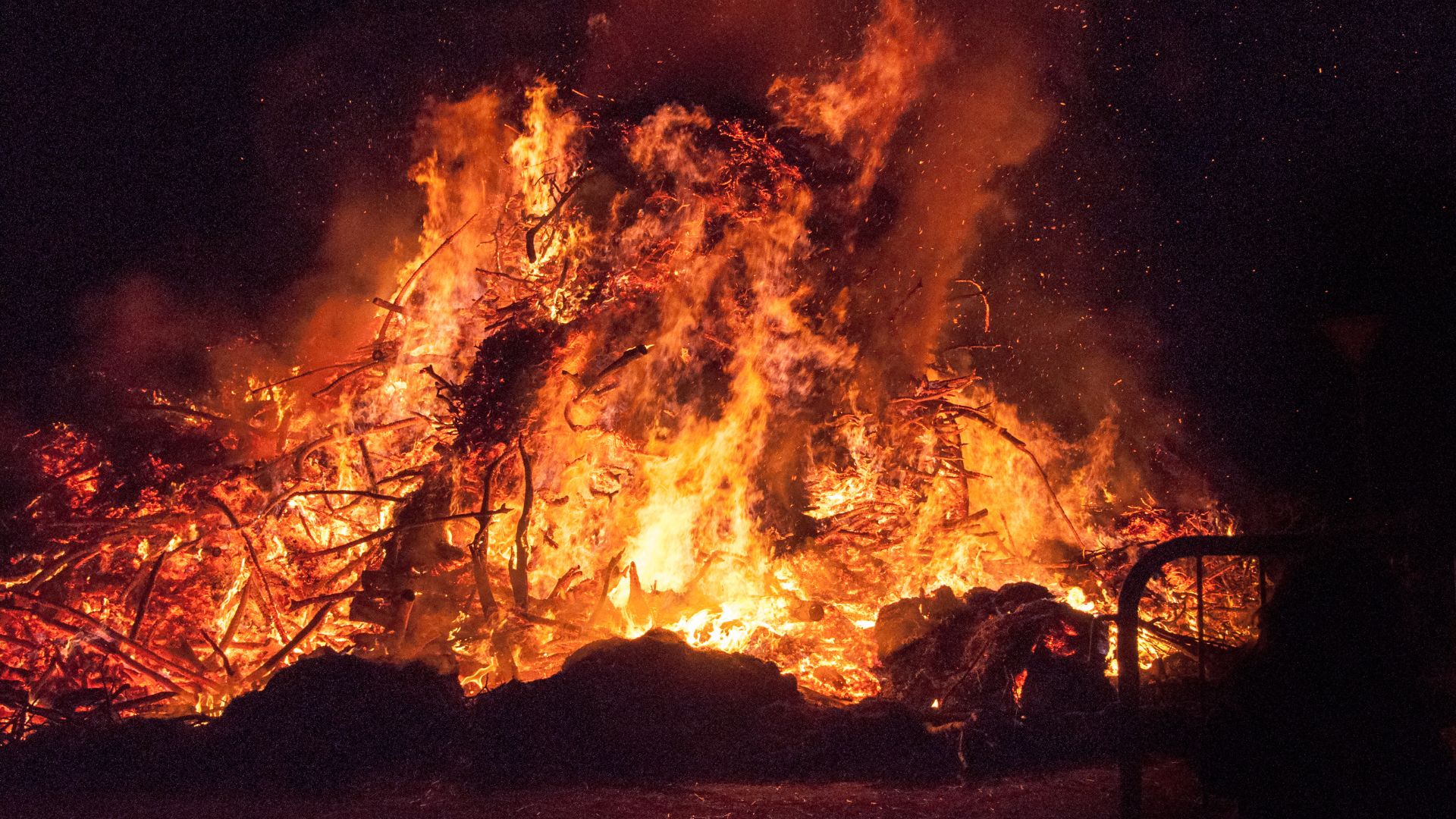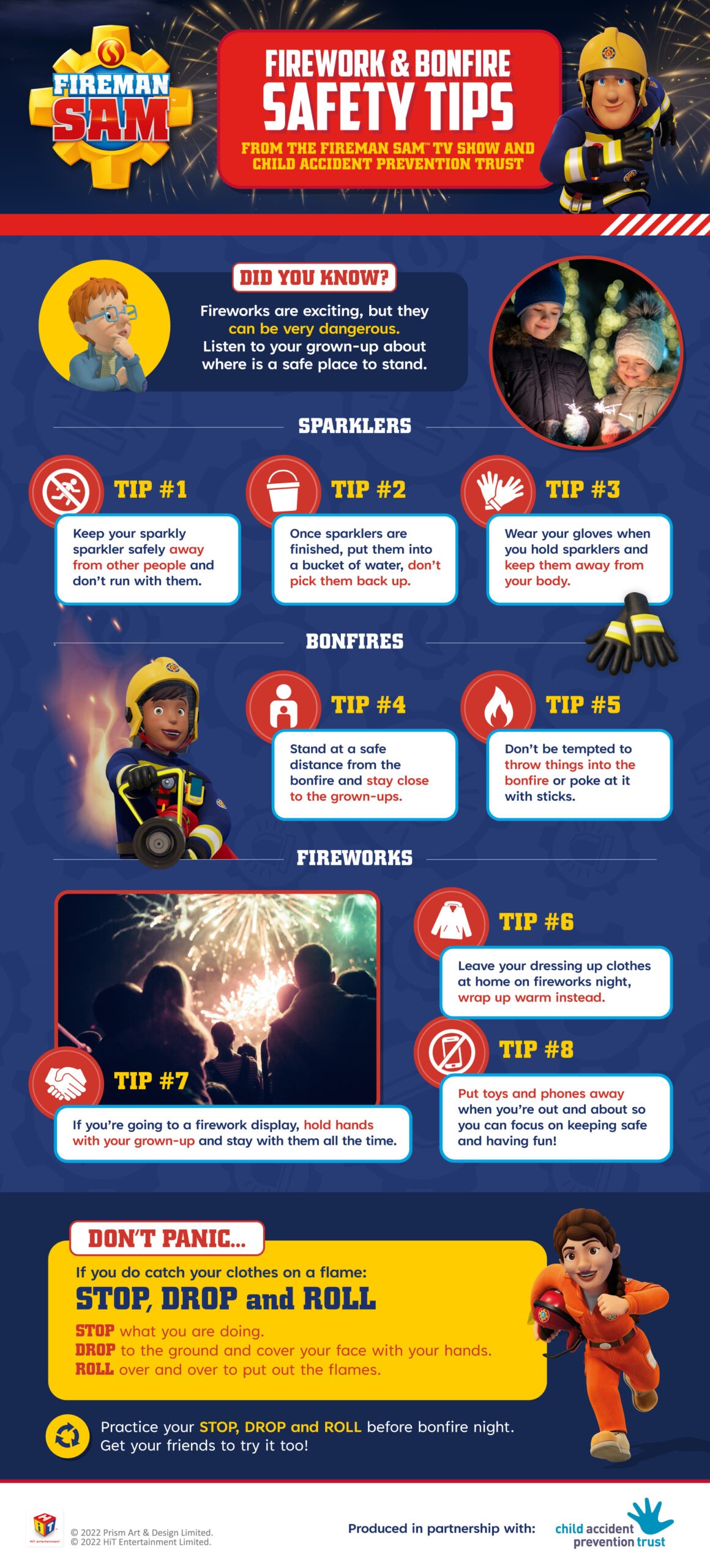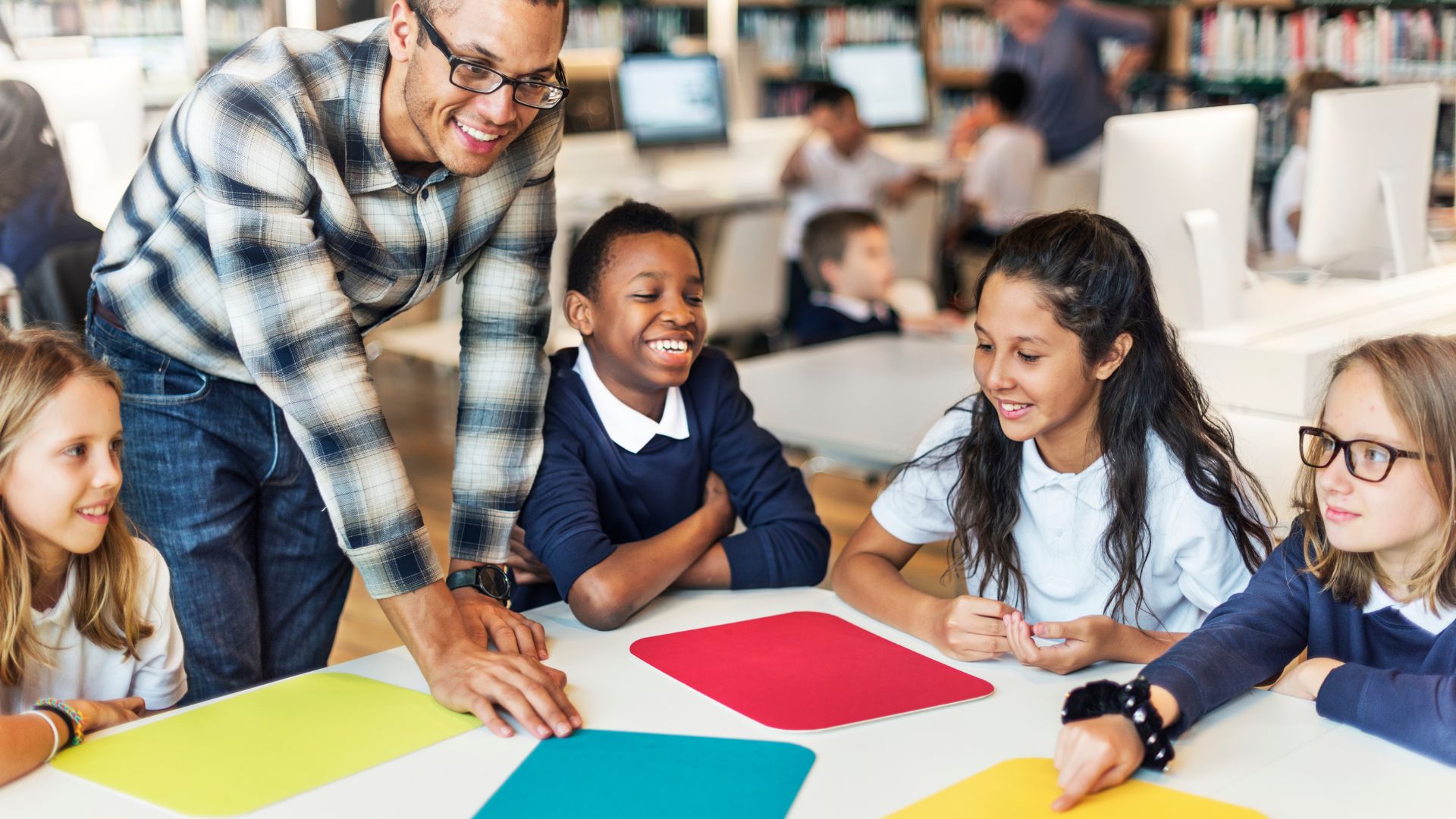Bonfire Night Safety Tips For Children
10 Jul, 20241-2 minutes
In this blog, you will learn:
- Bonfire night safety tips for children.
- How to find and apply for the best education and SEND jobs.
Every year Bonfire Night comes around and the risks and dangers posed by fireworks and sparklers remain ever present. Even though Teachers and Teaching Assistants aren’t usually with children at organised displays to celebrate Bonfire Night, it is important that they ensure pupils are aware of the importance of fire safety.
Making children aware of the dangers and accidents that could happen on Bonfire Night is crucial to their own safety. According to the Child Accident Prevention Trust, more than 550 children under 16 are taken to A&E in the weeks surrounding Bonfire Night, with injuries sustained as a result of firework related accidents.
In this guide, we share Bonfire Night safety tips for children to help them understand how to have fun but also stay safe this Bonfire Night.
What is Bonfire Night?
Bonfire Night is an annual celebration in Great Britain that falls on 5th November. It was inspired by a historical event when Guy Fawkes and 12 other conspirators attempted to blow up the Houses of Parliament on 5 November 1605 in an act known as the Gunpowder Plot.
An anonymous letter to the authorities revealed their plans and Guy Fawkes was caught red-handed. From then on, people celebrated the 5th November and Guy Fawkes Night became Bonfire Night.
Today, 400 years on, thousands of people in Britain light bonfires and models of Guy Fawkes, set off fireworks and play with sparklers on Bonfire Night. It is common to see bonfires and fireworks in gardens and organised displays on and around November 5th.
The importance of safety talks in schools
It’s important for schools to take the necessary steps to ensure the safety of pupils by making them aware of potential hazards and risks. Bonfire Night increases the risk to life, and raising awareness of the dangers associated with fireworks, bonfires and sparklers is important to keep children safe from harm or injury.
According to research by the Child Accident Prevention Trust and Fireman Sam brand, a quarter of parents have never discussed Bonfire Night safety with children under the age of 8, despite 81% saying that teaching children about fire safety is a priority.
As schools are also responsible for the wellbeing of pupils, it is important to teach them about the importance of staying safe.
7 Bonfire Night safety tips for children
Bonfire Night safety tips for children include:
- Have a firework safety talk.
- Dress appropriately.
- Keep a safe distance.
- Attend official displays.
- Practice sparkler safety.
- Never throw fireworks.
- Stop, drop and roll.
Have a firework safety talk
The most important safety tip in anticipation of Bonfire Night is to organise a firework safety talk at school. Begin with an overview of the dangers and risks that can occur on Bonfire Night.
You could use real life scenarios to spark discussions with childrens about the dangers of fireworks and the risks to safety in the lead up to Bonfire Night.
Create a presentation, watch safety videos or organise a fire safety talk in the classroom from real life firefighters. Firefighters can make children aware of dangers and that both bonfires and firework incidents can result in life changing injuries. They could also teach students about their role and fire safety laws and the consequences of breaking those laws for the sake of Bonfire Night.
Dress appropriately
Not only is it important for children to dress warmly for Bonfire Night, but to ensure that they are wearing clothing that is safe. Children should avoid wearing loose or flowing garments which could catch fire - pay close attention to Halloween costumes as they are often made of flammable materials.
Wearing clothes or accessories made of polyester can be especially dangerous and should be avoided around open flames and sparklers. Dress in snug-fitting, woollen and flame-retardant materials if possible.
Keep a safe distance
When it comes to Bonfire Night, the excitement can be overwhelming for children. However, this is where it can become dangerous if children are over excited and running around freely.
At public displays, there will usually be restrictions in place to keep people at a safe distance; it’s important to teach children to respect the rules in place.
At private events, it is even more important for children to know that they should be 5 to 8 metres away and that they should never go back to a firework once it has been lit.
Make children aware of safety zones, an area where they can freely run around and have fun without worrying that they are getting too close to anything dangerous. Explain the importance of respecting boundaries and listening to adults, and how simple safety can make a difference to a person’s safety.
Attend official displays
During Halloween and Bonfire Night, there are many firework displays and public bonfires that people can attend to celebrate and have fun. It is considered safer to attend an organised display rather than host a bonfire at home.
Official displays are usually supervised by responsible adults whose job it is to ensure the safety and wellbeing of children and adults.
Practice sparkler safety
Children love playing with sparklers but despite them being fun and seemingly magical, sparklers are not toys and can be just as dangerous as fireworks or a bonfire.
Sparklers burn 16 times hotter than a kettle so it is important to teach pupils about being cautious when yielding a sparkler. Children must learn to be aware of their surroundings and proximities when playing with sparklers.
In the classroom, you could practise waving pencils, rulers or sticks to ensure every pupil is able to determine a safe distance and learn how to properly handle a sparkler. Respect sparkler safety, and ensure children hold sparklers at arm's length, wear gloves and don’t run with them.
Once the sparkler has burnt out, it’s just as important to teach children how to safely dispose of them to ensure that they don’t burn themselves, others or cause any damage.
Once the sparklers are finished, put them into a bucket of water or sand to cool down. Once they are sufficiently cooled down, most of the chemicals will have dissipated and an adult should dispose of them.
Never throw fireworks
This might be the most important tip of all to ensure that children are not reckless or dangerous on Bonfire Night. Make children aware of the fire safety laws in place and the importance of being responsible.
Remind students that fireworks are dangerous if not handled properly and that it is against the law to set off or throw fireworks in a public place. Students shouldn’t throw fireworks or put them in their pockets as they can go off at any time and cause life changing injuries and damage.
Students also shouldn’t throw anything into a bonfire or at anyone nearby, as this can be dangerous.
Teach children about the consequences of their actions and that the Fire Investigation Team work with the police to press charges against those who deliberately start fires or throw fireworks.
Stop, drop and roll
Stop, drop and roll is a common lesson taught in schools regarding fire safety, not just Bonfire Night. If a person’s clothes catch on fire, it is important to follow the stop, drop and roll routine.
In a survey of 1,000 parents of children under the age of 8, by the Fireman Sam brand, only 39% said their child would know to stop, drop and roll if their clothing caught fire. Teach children that it’s crucial not to panic, but to stop what they are doing, drop to the ground and roll over to put out any flames.
Schools must prioritise fire safety and remind students of measures they can take if things take a turn for the worse on Bonfire Night. Ensure students are also aware that they should cover their face with their hands and stay down until the flames are out.

Remember to teach children the tips above to ensure they enjoy watching the sky light up on Bonfire Night from a safe distance!
Recruit teaching staff
As a specialist education recruitment agency, we support mainstream and SEND schools with their temporary, permanent and temp-perm staffing needs.
We currently work with hundreds of schools and have exclusive access to some of the best Teachers and Teaching Assistants in the North West.
If you’re struggling to fill a teaching vacancy, why not get in touch with one of our team to see how we can help?
- Primary schools - Jimmy Callagher
- Secondary schools - Liam Jones
- SEND schools - Jamie Heath
Teaching jobs
If you’re searching for your next teaching job, why not take a look at the latest teaching vacancies, or simply upload your CV to be notified when a relevant position becomes available.
Who is Spencer Clarke Group?
Established in 2017, we’re a vibrant and progressive recruitment agency based in the heart of the North West.
We continually reimagine the recruitment process to challenge convention and defy expectations; from creating a better recruitment experience to remodelling employee engagement, we thrive off doing things differently and turning heads along the way.
We operate in two sectors:
In eleven specialisms:
Healthcare, Social Care & Nursing
Corporate Functions & Business Support




